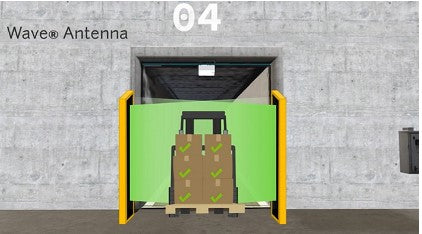Why UHF RFID is great for AI and Automation.
UHF RFID enables wireless automated scanning which captures base identity, location and time stamp data on every tagged item. That data is gold for AI and Automation.
1. Applying a UHF RFID Tag to an item gives it a unique ID / serial number
As automation and artificial intelligence become increasingly prevalent in business; The ability to digitally identify physical items, so that item data can be tracked and recorded becomes important. UHF RFID provides fast accurately identity to individual components, batches of materials, construction equipment, retail goods or other items. The AI systems can then use the digital ID to capture base data such as location, temperature, date, and time on every tagged item.
2. Automatic Scanning / Reading / recognition of an items UHF RFID tag
UHF Tags are attached to items and transmit the stored ID to readers. The readers may be positioned at fixed points such as ‘goods out’ or ‘goods in’ or at specific locations within a manufacturing plant, as each item passes by, the reader will automatically scan the UHF RFID Tag ID. Data is captured whenever a tagged item moves past that Reader choke point. Alternatively, the readers can be built into tablets or mobile phones, enabling the tags to be scanned wherever the entity happens to be.
3. No batteries = long life
Passive UHF RFID tags are activated by the reader’s power source, so they do not require batteries. UHF RFID tags will survive outdoors in all conditions for ten years and beyond. Typically, passive tags are used for items that need to be read within a range from 10mm up to about 15m.
4. Can detect ‘hidden’ objects
Unlike bar codes, with UHF RFID tagged object being scanned does not necessarily have to be within the direct line of sight. Files in racks or items moving on a conveyor belts, can be detected simply by positioning the reader correctly.
However, the ability to read a tag will depend on a combination of factors such as the type of tag and reader, the surface material, and the environment.
5. Multiple tags can be read at once
One RFID reader can scan and read data from many UHF RFID tags simultaneously, 100s of tags per second, unlike barcodes where each item must be scanned separately. This makes it possible to wirelessly can 100s of items UHF RFID tags very quickly which can save a huge amount of time. The contents of an entire pallet can be scanned as it leaves the warehouse, or a stock check of the contents of a shelving rack can be carried out without removing each item.
6. Rugged, weatherproof and safe.
RFID tags can be more robust than barcodes or other print labels and can be used even in the most demanding environments. There is a vast range of UHF RFID tag types designed for everything from tires to avocado.
UHF RFID tags can operate in contaminated or hazardous environments, high-vibration areas or where there is a risk of explosions (ATEX compliant).


